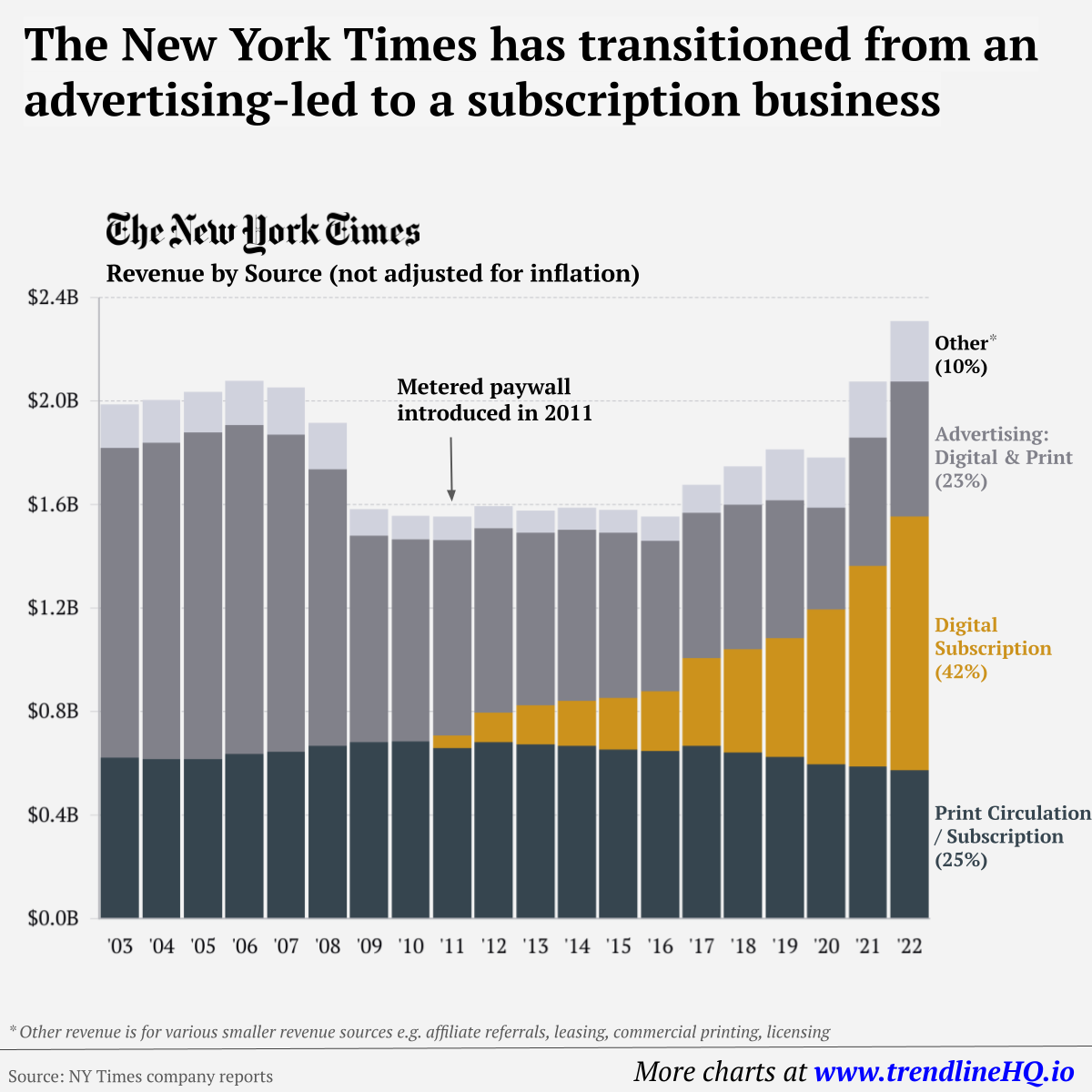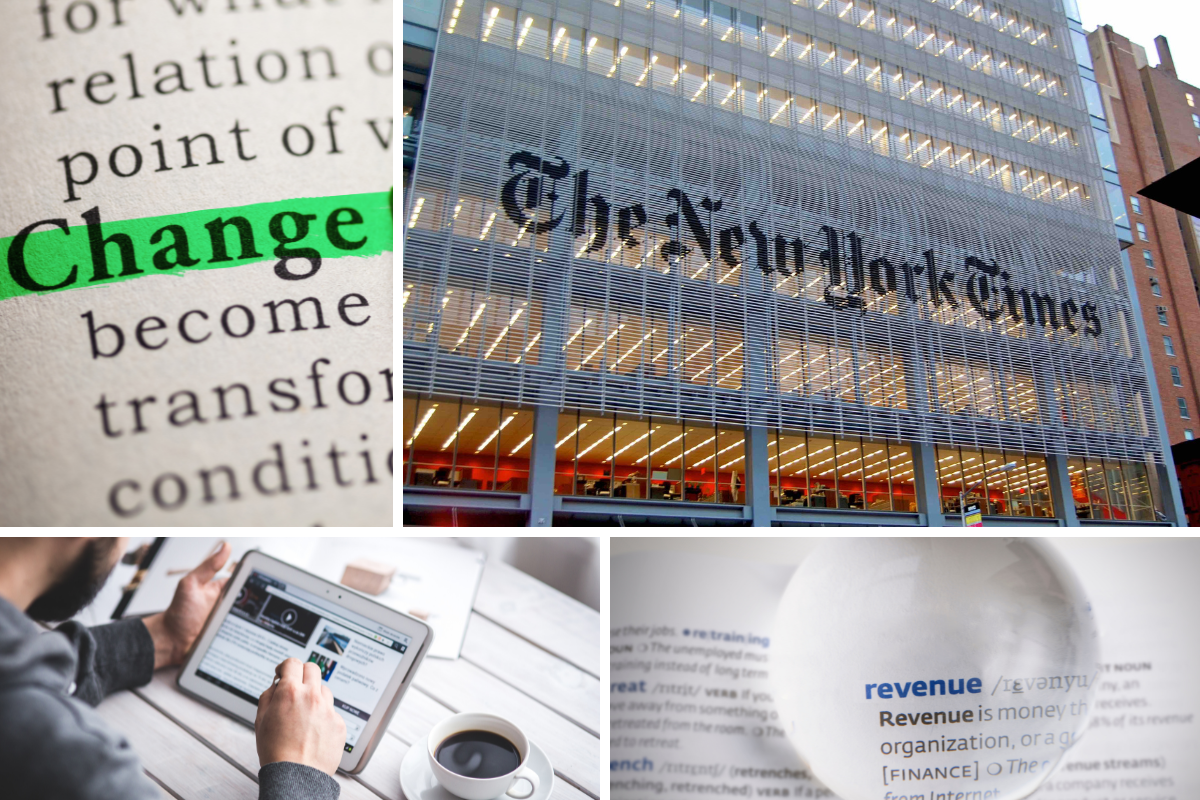Evidence provided by globally acclaimed media outlets, strongly suggest that consumers are increasingly willing to pay for high-quality journalism, as they recognize the value of credible, well-researched reporting.
What you pay is what you get
“Quality is never an accident; it is always the result of high intention, sincere effort, intelligent direction and skillful execution; it represents the wise choice of many alternatives.”
William A. Foster
Quality is not something that happens by chance, but rather something that is carefully crafted and intentionally pursued. Consumers are usually willing to pay for quality and easily accessible content, whether it’s entertainment or news. Just as the music, TV and movie industries have successfully established a paid digital monetization model, many news outlets are currently moving towards this approach.
This was also indicated in a recent survey, conducted by the Reuters Institute for the Study of Journalism (RISJ), which showed that subscription and membership investment is a top revenue priority. Specifically, 80% of publishers admit that one of their most important revenue priorities will be investing in digital subscriptions, memberships, and donations.
This has led to the rise of subscription-based models, where readers pay for access to premium content and features, and where quality journalism is seen as a key differentiator and selling point.
Paywall background info
A news paywall is a digital subscription model used by media organizations to restrict access to their online content, typically after a certain number of free articles have been accessed. Users are then required to pay a fee to access further content. Its purpose is to generate revenue for news organizations that have struggled to monetize their digital content, as traditional advertising revenues may decline.
Paywall models are quite flexible, with some publishers experimenting with dynamic paywalls that adjust based on reader behavior or offering different tiers of access to content. Moreover, an increased focus on data analysis and user research is vital to better understand what motivates readers to subscribe and how to optimize paywall strategies.
For example, metered access, allows readers to access a limited number of articles for free before prompting them to become a member and subscribe for full access to the content. By implementing data walls, companies can gather more comprehensive data about their audiences and build customer profiles. This enables a more personalized reader experience by showcasing the relevant content to readers and helping them understand the value of the site’s content.
Greater emphasis on offering value beyond just access to content, with many publishers launching new products and services for subscribers, such as exclusive events and more.
The NYT Case
The New York Times (NY Times), one of the world’s most recognized and popular news organizations, has been gradually adapting its revenue model for decades. In fact, the “subscription-first” strategy is a business model that prioritizes digital subscriptions over advertising revenue.
This approach involves investing heavily in digital content and features to attract and retain subscribers, while reducing reliance on advertising revenue, which can be volatile and subject to market fluctuations.
To support this strategy, the company has implemented several initiatives, such as introducing a metered paywall (2011) that limits the number of free articles readers can access each month, launching new digital products and services, and investing in high-quality journalism.
By prioritizing subscriptions, the company aims to create a stable and sustainable source of revenue that is less reliant on advertising and better reflects the value of its content.

The subscription-first strategy has been successful for the company, as it has seen a significant increase in digital subscriptions in recent years. In fact, the company reached its goal of 10 million subscribers by 2025 four years ahead of schedule, in 2021. This approach has also been adopted by other media companies, as they too seek to diversify their revenue streams and reduce their reliance on advertising.
Price is what you pay. Value is what you get.
This quote of Warren Buffett, underlines rather simply that, while the price you pay for a product or service is important, it’s the value you receive in return that truly matters. It implies that paying more for something of higher quality is often worth it in the long run, as the benefits and satisfaction derived from a quality product or service may outweigh the initial cost.
Mrs. Helen Konstantopoulos, Vice President, International Circulation & Development of The New York Times, was recently interviewed by Marketing Week about an alternative business model in the news industry that is based on subscriptions and can offer high-quality content to the readers, as well as a premium advertising environment for brands.
In fact, she explains that a great news organization starts with excellent content, which attracts excellent readers, who in turn attract excellent advertisers. When asked how a publisher could persuade an unwilling audience to pay for content, she commented that, producing unique content that adds value to people’s lives, then they will eventually pay for it. Beyond that, she stressed the importance of advertising formats that do not degrade the user experience, maintaining the product and user experience at the desired level, and ensure a quality and brand-safe advertising environment.
When prompted to summarize the insights behind the organization’s strategy shift, Mrs. Konstantopoulos said that “the NYT has always been a readership-driven publication, whether in print or digital format. Our mantra has always been that a great journalistic enterprise starts with exceptional content, which attracts exceptional readers, who in turn attract exceptional advertisers.” She added that “as the advertising market faced intense pressure from large digital platforms, we recognized years ago the need to strengthen our strategy for attracting paying subscribers and launched the paywall in 2013. In just 10 years, we became the most successful subscription-based news publisher in the world.”
Discussing the effect that this operational model had on advertising, Mrs. Konstantopoulos stressed the importance of quality content; “we continue to invest in our newsroom, even during the toughest times. We believe that if you produce content that is good and unique enough for people to pay for, eventually they will. This requires huge investments in both content and user experience, and that investment pays off by helping us attract millions. new readers but also retaining their millions. existing subscribers.”
She also pointed out that the organizations content mix was also transformed, by introducing new services and sub-brands that cater to the readers’ diverse needs, managing to address requests that extend beyond the traditional news scope.
Additionally, she explained that the NYT readership-based strategy has facilitated the creation of compelling ad experiences that yield better performance for brands: a closely regulated and managed (in terms of data privacy rules) First Party Data offering for advertisers, alongside with the replacement of ad formats that compromise the users’ experience, with high-quality, flexible ad types. According to Mrs. Konstantopoulos, this approach is mutually beneficial, offering advertisers an ideal platform to promote their products while enhancing the reader experience.





